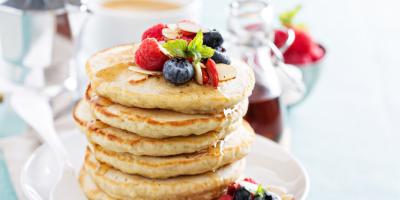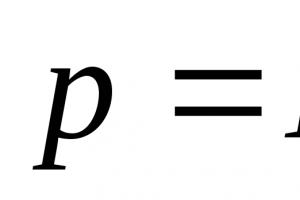Wood bleach is a preparation that allows you to “whiten” wooden surface, regardless of its purpose and type of use, as well as protect it from fungal damage.
The need for bleaching arises when a wooden product (log house, furniture, finishing elements) loses its natural color and develops a yellow or gray tint, which is caused by external factors(atmospheric phenomena, impact high temperatures etc.).
The principle of operation of the bleach is based on the oxidation of wood, during which the discoloration of lignin occurs, which is a substance that holds together the cellulose fibers of wood and is located in the walls of plant cells and the intercellular space.
Composition of wood bleach
Currently produced by industry a large number of different brands of wood bleaches. They can be classified into two categories, these are:
- Contains chlorine.
This group of drugs includes bleaches made using potassium or sodium hypochlorite, chlorine dioxide or bleach.
- Without chlorine containing components.
This group contains drugs that contain hydrogen peroxide, as well as ammonia, alkali and oxalic acid.
The best wood bleaches

The market for goods related to wood processing offers a wide range of bleaches of different brands, domestic and foreign manufacturers.
Different brands of drugs differ in chemical composition and cost, packaging and options for use.
Neomid 500 is a chemical composition used for bleaching and disinfection of wood. Used for treating wooden surfaces indoors and outdoors.
When bleaching with Neomid 500, the wood returns its natural color, thereby increasing its grade, the structure of the wood does not change, and its properties are preserved.
In addition, this bleach destroys fungal formations that destroy the structure and color of wood.
Neomid 500 is used as an antiseptic for processing pellets (fuel granules), which increases their shelf life.
Advantages of the drug:
- environmental Safety;
- high quality of goods;
- optimal price-quality ratio;
- ease of use;
- versatility of use depending on the type of wood being processed.
The product is certified and sold in cans of different packaging - 1.0/5.0/24.0/35.0 kg.
Manufacturer: EXPERTECOLOGY-NEOHIM group of companies, Russia.
Senezh Effo
This bleach is used to lighten wooden surfaces that have lost their natural color when exposed to atmospheric conditions and fungal infections due to prolonged use and exposure to ultraviolet rays.
Senezh Effo is used to disinfect fungal lesions of various stages on the surface wooden products and finishing materials.
This preparation is used when processing planed and chopped lumber that has not previously been treated with paints and varnishes. Bleach can be used indoors and outdoors and should not be used to remove blue stains from inside wood grain.
Advantages of the drug:
- does not contain chlorine, based on an oxygen-transfer agent;
- provides deep whitening;
- does not lose its characteristics when long-term storage and freezing;
- does not form chemical burns on the treated surface;
- capable of removing all types of organic damage;
- safe for humans and animals when used as directed;
- has a pleasant lemon smell;
- is an explosion and fire safe substance.
Sold in various containers and packaging.
Manufacturer: Senezh-preparaty company, Russia.
Homeenpoisto
Homeenpoisto is a hypochloride solution designed to remove mold from wooden surfaces. This product is used to clean painted and unpainted surfaces.
This is a jelly-like solution that contains sodium hypochlorite and sodium hydroxide, which are aggressive substances that require special care when working with them.
Sold in canisters of 1.0 and 5.0 liters.
Manufacturer: Tikkurila, Finland.
Sagus
This drug is effective means for bleaching wood both indoors and outdoors. Sagus is used when processing chopped, sawn and planed wooden surfaces.
The solution removes darkening on the surface of wood of various origins (from external influences, under the influence of time), and also serves as a disinfectant that removes lesions biological in nature(microorganisms, insect larvae).
The advantages of this drug are:
- possibility of bleaching inside the wood surface (deep penetration);
- high efficiency;
- retains its positive properties during long-term storage and freezing;
- does not cause chemical burns to the treated wood;
- capable of removing all possible types of damage to wooden surfaces;
- fire safe.
Sold in cans, packaged in 5.0 and 10.0 liters.
Manufacturer: Sagus group of companies, Russia.
Fongifluid Alpa
Fongifluid Alpa is an aqueous solution based on fungicidal (antifungal and anti-mold) substances. The drug is intended to destroy various types moss and lichen, as well as mold and microorganisms.
Used for outdoor and interior work as a preventive and therapeutic agent.
Sold in cans of 0.5/2.0/5.0/20.0 liters.
Manufacturer – ALPA COATINGS Company, Russia – representative of the SOMEFOR® concern, France.
Caution when working with wood bleaches

Working with wood bleaches requires care and caution; in addition, you must follow following rules that ensure the safety of work are:
- Work should be performed by trained personnel who are familiar with the hazards of working with the specific type of bleach.
- Personnel must be provided with special clothing and personal protective equipment (gloves, goggles, and for some types of materials - a respirator).
- Bleach should be stored and prepared only in special plastic containers.
- When applying, use a serviceable tool (brushes, rollers, etc.) made from synthetic materials.
- All work on further processing of wood is carried out only after the bleach has completely dried and the surface has been cleaned of its residues (rinsing).
Treating wood with bleach
Treatment of wooden surfaces with one or another type of bleach is carried out in accordance with the operating instructions that come with the specific type of preparation.
The instructions describe what needs to be done before application, how to apply the product and how long it will take for it to dry.
Besides this, there is general recommendations that can be used when treating wooden surfaces with bleaching agents are:
- When performing work, do not mix different brands of bleach.
- After the preparation has dried, the surface should be washed with clean water.
- If any area of the wooden surface is severely damaged, it is necessary to treat this area with a more concentrated solution of the drug.
- The work must be carried out under conditions corresponding to the mode of use recommended by the product manufacturer.
- When working with bleaches, you must read the instructions for use and follow safety precautions for working with substances of this kind. This applies to the use of personal protective equipment, as well as the provision of ventilation when performing work indoors.
Wood bleaches are effective drugs, allowing you to extend the life of wooden products and give them a beautiful and natural appearance.
Bleaching wood involves changing its color to a lighter color as a result of exposure to chemicals (see video). It is known that natural color different tree species are different. For example, in a maple it is gray, in a cedar it is brown, in a linden tree it is white, in an apple tree it is reddish, in a pine tree it is yellow or red, in an alder tree it is brown, etc.

Over time, the color becomes even more saturated and darkens (see photo). In such cases, it is very difficult to paint it in light colors. Therefore, the wood is pre-bleached. You can do this yourself at home.
Do-it-yourself wood bleaching methods at home
Bleach
There are several ways to bleach wood with bleach (see video). According to the first of them, bleach is diluted with water in a ratio of 1:10 and left for some time. After the liquid has infused a little, you can wet the surface of the selected material with it, after which it is wiped with acetic acid after about 5 minutes. Lightening of the tree should occur within 15 minutes after the manipulations. If the wood is very dark, the procedure will have to be repeated several times.


According to the second bleaching method, bleach is mixed with water in a ratio of 1:20. After settling for a while, the liquid is poured into a large container, into which it is subsequently immersed. required material. After about 3 minutes, about 75 ml per 1 liter of acetic acid is added to the container. In this solution, the wood should whiten in about 40 minutes.
Calcium hypochlorite

For whitening at home, the presented solution is diluted with water in a ratio of 8:100. The surface of the material is wiped with the resulting mixture, and after about 5 minutes it is additionally rubbed with a solution of acetic acid.
Hydrogen peroxide

To bleach with your own hands, the selected surface is moistened with hydrogen peroxide, which is left untouched for a while (see video). Then the treated surface is moistened with ammonia. The wood should lighten in color within 15 minutes. If this does not happen, the manipulation must be repeated.
Immersion in porcelain or enamel dishes
To lighten the material using this method, water, hydrogen peroxide and ammonia are mixed in proportions of 10:10:5. The material is immersed with your own hands in the created solution, previously poured into an enamel or porcelain container (see photo), and left in it for about an hour and a half, after which it is removed and dried in a well-ventilated area.
Oxalic acid


At home, whitening can be done using oxalic acid. To do this, oxalic acid is diluted with water in a ratio of 4:100. The surface of the material is wetted with the resulting liquid, after which after about 10 minutes it should lighten, as in the photo. After this, the wood is moistened with water and left to dry in a well-ventilated area.
It is with deep regret that I inform you that you have landed on a blue page. And this blue stain must be urgently removed from the timber of your log house - how bleach log timber! Unfortunately, our warm, beautiful, natural wood(more precisely wood) is susceptible to rotting and can deteriorate under the influence of fungi and mold. Blue stains on timber or logs, on boards or linings are the result of improper storage or conservation of wood products.
Diverting from the topic of direct bleaching of wood, let me remind you that this matter must be stopped at all stages of processing the wooden parts of a wooden house. Immediately after harvesting the trunks (transport preservation), during storage (temporary preservation) and after making crowns or installing walls (antiseptic treatment and final painting)
How to bleach wood, depends on what kind of damage the parts of the log house received. Typically, blue stains appear on fresh, damp wood even before the stage of final processing of parts. It is during storage with poor ventilation that the fungus begins to spread as quickly as possible. They can only help.
Causes of blue wood products:

Conclusion: in order not to bleach the wood of the wooden parts of a bathhouse or house in the future, it is necessary to use construction chemicals at each stage of construction.
Wood bleach
In the old days, so as not to bleach the wood, they sometimes added salt to it! This delayed the process of the appearance of fungal infection for some time.
One of the oldest methods of bleaching wood using household chemicals– use of laundry bleaching agents. Alas, it makes no difference where this mold settles, so the methods of control are the same. “Whiteness” is a remedy for housewives. But it can save the initial stage of defeat upper layers boards or logs. If the blue begins to turn into black, then one pass of the brush is not enough.
For more effective whitening wood needs to be prepared for this process, namely: smooth surface make it loose so that the mold and fungi killer gets as deep as possible. Therefore, many masters recommend using Sagus before bleaching. Chlorine wood bleach « Sagus", according to the manufacturer, can cope with any lightening and restore natural color. But where is the line that separates the natural color of wood from dead whiteness?! To be precise, chemical bleaches do not really remove color from wood. By reacting with the chemicals that make up the blue stain, the bleach forms another substance that is no longer blue or black. Therefore, it is extremely important to ensure that there are no parts of any kind on the surface. protective coatings in the form of paints, varnishes, emulsions, fats, etc. Translucent azures “transmit” blue well even through themselves. Therefore, it is impossible to simply cover a blackened log with paint: 1) it will still be visible through the varnish, 2) it is fraught with deep damage to the log house or timber.
Some “Kulibins” recommend this brutal method how to bleach log beams and get the original look of wood - treat the surface hypochloride. They argue this by saying that all other drugs of modern chemistry contain this substance. Personally I don't like it Such methods can lead to the fact that the wood can receive a chemical burn and lose its aesthetic properties. Stabilizers are added to concentrates created in factories to prevent the destructive effects of chemical compounds. They limit the depth of their penetration and stop activity after a certain time of exposure.

I would not discount such a complex method of bleaching a log or beam as sanding, which removes the damaged layer quite deeply. But this method is the most expensive and does not guarantee cleaning of fungus and mold in the corners where grinding wheel won't be able to get there. recommended for very deep wood damage, when chemically it is not possible to remove all areas of blackening and blueness
Factory-produced wood bleaches - they can and know how to bleach the timber of your log house.
|
"White" |
Laundry detergent A folk remedy when nothing is at hand |
|
|
"Sagus" ( LLC "Sagus") |
Wood bleach |
|
|
No comments. Folk remedy Test before use! |
 |
|
|
Wood regenerator. it is necessary to dilute the drug with water in a ratio of 1:1 |
 |
|
|
Bleach TM "Neomid" After use, a residue remains in the form of salt crystals, which must be washed off with water. |
||
|
BioShield |
A means of protecting wood from rotting and at the same time - Bleach |
|
|
Senezh EFFO or Senezh NEO |
For quick deep or superficial lightening of wooden surfaces darkened by mushroom stains |
 |
|
Concentrate for the production of whitening compositions water based |
||
|
WoodMaster Frost |
Whitening and protective composition. Whitening and protective composition for wood. Removes blue stains, rot, mold |
 |
 All chemicals found in wood bleaches typically contain substances that are not safe for health and can be dangerous if used incorrectly. Be sure to take precautions to protect yourself from contact with such substances and avoid inhaling their fumes. Wear gloves and safety glasses. If necessary, use a gas mask (not a respirator)
All chemicals found in wood bleaches typically contain substances that are not safe for health and can be dangerous if used incorrectly. Be sure to take precautions to protect yourself from contact with such substances and avoid inhaling their fumes. Wear gloves and safety glasses. If necessary, use a gas mask (not a respirator)
Before bleaching, consult with specialists in How to bleach timber.
The best bleaches are those that do not destroy lignin, the basis of wood.
It is better to bleach the entire surface of the wall so that individual logs of the wall do not look like black sheep in the design.
Using too much chemicals can kill the wood's grain and shades, making them look like plastic sticks.
The air temperature during bleaching is not lower than 5 degrees Celsius, so that the reaction takes place intensively.
If the wood has lost its attractiveness appearance, then you can give it a second life by bleaching the surface. There are many options for this, including, for example, chlorine. These substances are available and inexpensive, so you can use them at home.
Bleaching with chlorine: preparing tools and materials
Wood bleaching can be done using chlorine, and you must prepare:
- crystalline soda;
- sodium hydroxide;
- bleach;
- water;
- perhydrol.
Speaking of the last point, it is worth noting that to carry out the work you will need a 30% solution of hydrogen peroxide. It should be remembered that such work must be performed with gloves.

Carrying out bleaching
Wood bleaching must be carried out using a certain technology. To do this, you should prepare a special solution of eight shares, which must be mixed with one share of salt, adding 35 parts of water. The resulting mixture is stirred and the solution is allowed to brew, only then can you begin processing the wood.
The second option would be to prepare a solution for which 48 grams are mixed chemical substance with water in a volume of 100 grams. The caustic soda solution must be applied to the surface of the wood, which is then dried. Sometimes home craftsmen treat wood with perhydrol, it is final stage dried, and if bleaching turned out to be insufficient, the procedure can be repeated. In order to neutralize this area, you should wash it with a 4% acetic acid solution and then dry it well.
Wood bleaching is sometimes carried out using hydrogen peroxide, as well as ammonia. "Hydroperite" tablets are diluted with water: 10 tablets per glass of water (200 ml). While 5 percent is added in a volume of 25 milliliters (its smell should be clearly felt). It is necessary to soak the wood in this solution and leave it for several days, and you should expect the effect that the surface will become completely white.
The use of peroxide, although effective, is not suitable for all types of wood. For example, oak may not change color after processing, while this method is ideal for bleaching walnut, birch and beech. It is important to use the correct one which should not be less than 30%. The surface must be wetted before application. warm water and cover with 5% ammonia. After bleaching is completed, the surface is cleaned with a mixture of bleach and soda ash. For 15 grams of lime, add 3 grams of soda and 100 grams of water.

Uses of oxalic acid
Do-it-yourself wood bleaching can be done using oxalic acid, but such work is carried out with great care. This is due to the fact that the desired effect can be achieved only with the correct percentage of components. To do this, prepare a 10% solution of oxalic acid and sodium hydrogen sulfate at a concentration of 20%. Sodium hydrogen sulfate is applied to the surface at the first stage, and then a solution of oxalic acid. After 5 minutes, the compositions are washed off with water.

Nuances of the work
Wood bleaching can be carried out by different technologies, however, at the final stage, all products must be washed off the surface. If you decide to use acid bleach, you need to wash it off with an aqueous solution. Bleaching agents cannot be combined. It is not recommended to subject glued products to such processing, as they may come apart. If you want to bleach pine wood in a short time, then the surface can be treated with a solution of sulfuric acid (taken in an amount of 20 grams), sodium peroxide (in a volume of 25 grams) and oxalic acid (in an amount of 15 grams). Liquid is added in a volume of one hundred grams.

Using Acrylit 153
Bleaching wood with whiteness is considered very effective, but alternative solutions can be used, for example Acrylit 153. This product is specially designed for darkened wood and is able to remove microorganisms without interfering with the breathing of the material, and without destroying its structure.
The substance does not affect the strength, adhesion and porosity of the surface in any way and does not change the smell of wood. The same cannot be said when wood is bleached with white; proportions, by the way, do not need to be observed. To carry out the work, you will need to moisten the sponge in the solution and apply the composition to the surface.
But as for Acrylit 153, before use it must be diluted with water using a one to one ratio. If the wood is damaged sufficiently, there is no need to dilute the product; the composition should be applied to the surface with a roller. If the whitening does not seem too intense to you, then you need to repeat the procedure after five hours. It is noteworthy that this product can even be used to bleach pine.

Additional solution
On sale today you can find the product “Valkor”, the cost of which is 1800 rubles. Its coloring is carried out in five minutes. You can use an alkyd-oil stain, which has almost no odor, but helps whiten the wood to an almost white state. Among the ingredients of the mixture there are antiseptic additives, so the stain does not need to be covered with anything after finishing the wood. As practice shows, this product perfectly whitens birch, and even under water-based varnish the surface remains noticeably lighter.
Sometimes experts use oil- and wax-based paint Decorwachs Deckend. It has a transparent structure, and after covering the wood, only the texture remains visible. Gradually, veins of material appear on the surface. On sale you can find oil with hard wax, which when applied allows the formation of a pinkish tint of oak. If we are talking about pine, then it will simply turn white, leaving a texture. The coating is applied in two layers, and then covered with colorless oil and hard wax. As a result, you will be able to obtain a silky surface. After coating, the wood not only becomes lighter, but also becomes harder, which is possible thanks to
Conclusion
Bleaching wood with chlorine, like each of the above options, is effective way. It’s up to you to decide which method to use; it all depends on your budget and your own preferences.
Examples include bleach, oxalic acid, hydrogen peroxide, titanium peroxide. The most common chemicals used in wood bleaching are oxalic acid and hydrogen peroxide.
Oxalic acid is used as a 10% solution, and this solution is mixed with a 20% solution of sodium hydrosulfite directly on the surface of the wood. The surface of the wood is first treated with this solution of sodium hydrosulfite. Chemical compositions applied to a wooden surface one after another, and after 5 minutes removed by rinsing with water.
Hydrogen peroxide as wood bleach it is not always possible to use, since it affects differently different breeds wood (read more about species). Hydrogen peroxide does not essentially bleach solid oak (with long-term processing it only gives the oak a greenish tint), but Walnut, beech and birch, hydrogen peroxide discolors very strongly. Concentration chemical solution Meanwhile, it should not be lower than 30%.
Before applying the solution hydrogen peroxide on the surface of solid wood (as well as on veneer), the surface must be moistened with water and allowed to absorb a little and dry. Then you should treat the surface of the product with a 10% solution of ammonia. And species such as birch and ash are recommended to be bleached using a solution of a 20% mixture of hydrogen peroxide and a 20% ammonia solution, taking these mixtures in a volume ratio of 10 to 1.
For light wood species, such as linden, maple, birch, poplar, you should use a solution of oxalic acid (1.5-6 grams) diluted in boiled water (100 ml). After completing bleaching in this solution, the veneer sheets must be washed with a solution that simultaneously lifts the pile and deresinates the surface. Composition of the solution (in grams): bleach - 15; soda ash- 3; water - 100. First in hot water dissolve soda, and then add bleach to the cooled solution. After treatment with the solution, the wood is washed with water.
In this note we will also describe certain aspects wood bleaching.
Is it possible to bleach wood in an accelerated way?
If it is necessary to bleach wood, resort to a proven product. But it must be said right away that the composition requires compliance with increased safety measures, since it contains toxic substances. So, mix 20 ml of a 30% sulfuric acid solution, 15 ml of 20% oxalic acid, 25 g of sodium peroxide and 1 liter of water. Apply the composition to the wood with a grass brush, and after achieving the effect, wash it off with a soda solution.
What rules must be followed when bleaching wood?
There are several of them, and all of them are time-tested. When the desired result is achieved, bleaches are washed off with water. When using acid bleach, use an aqueous solution of soda instead of water. You cannot test different bleaches on the same product, even if the previous one has been thoroughly washed off. Glued products You should not undergo this procedure, since the wood is impregnated with solutions, and after drying it may warp or come apart.
By the way, d veneer should be bleached with oxalic acid. You can also use lemon or acetic acid, diluted with water (50 g of acid per 1 liter of water).
Takei exotic woods like rosewood, lemon Tree and some others are practically not bleached, although, in general, this is not necessary due to their beauty and value.
For more accelerated bleaching, a solution containing (in grams) is suitable: sulfuric acid - 20; oxalic acid - 15; sodium peroxide - 25; water-1000. Titanium peroxide is considered one of the most successful wood bleaches.
When bleached, the wood of some tree species sometimes acquires the most unexpected shades. color range. So, for example, a walnut with its contrasting texture when bleached will give unusual gray-blue or pink shades of color, and an Anatolian walnut will literally become “golden” (bleach - 30% hydrogen peroxide).








